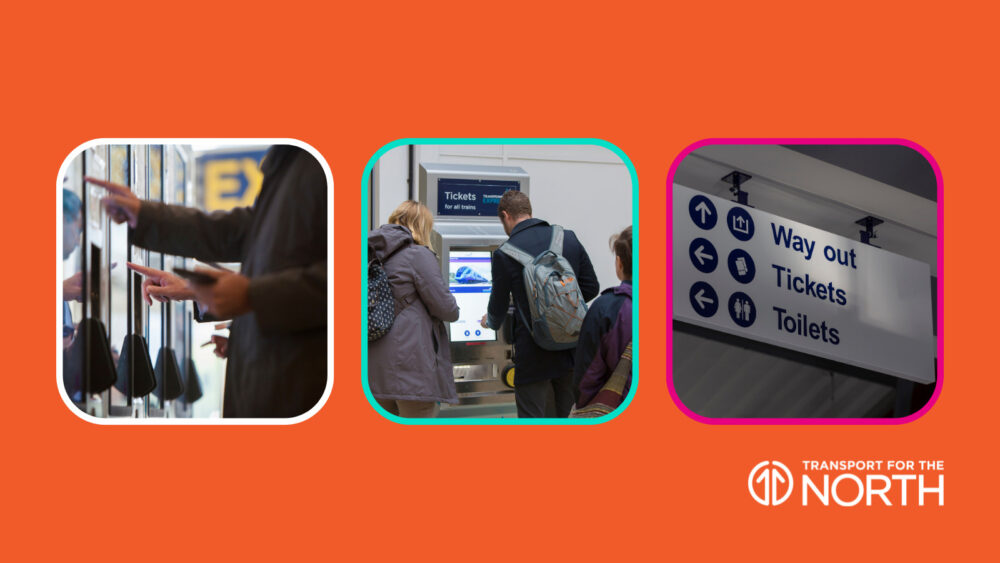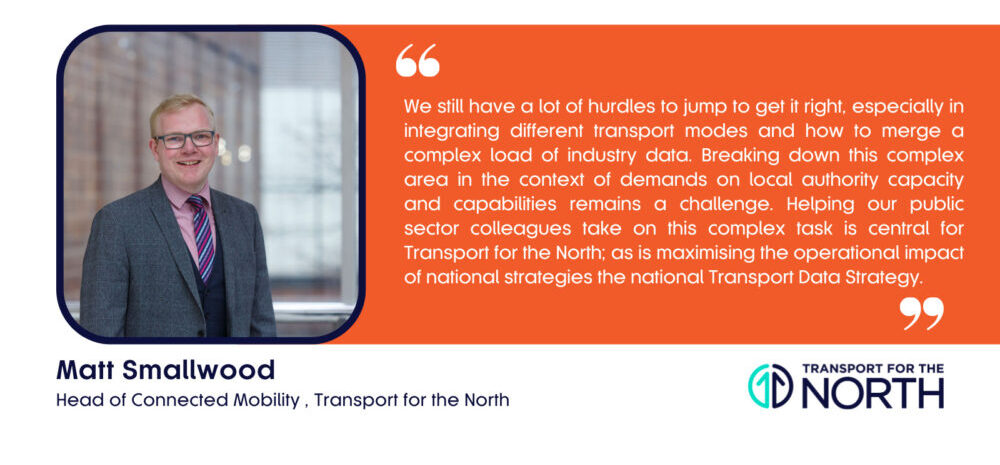
The way people pay for goods, the frequency and purpose of journeys is changing, and with it, people’s expectations of how they access transport. Part of this change is smarter ticketing, opening doors to enhance the accessibility, efficiency, and inclusivity of our transport systems. Matt Smallwood, our Head of Connected Mobility, explores the significance and future of smarter ticketing, examining its effects on passengers and the relevance in the North.
‘Smart ticketing’ may not sound all that new or smart, after all, smartcards have been around longer than I have. However, it is not just about the technology; it’s about developing ways people pay for and use transport that are user-friendly, effective, and inclusive.
Ticketing is the passengers’ first step in their journey. It marks their first interaction with our transport networks, and its simplicity can either attract new users or its complexity can create barriers that are difficult to overcome. Our collective aim needs to be to make it as easy as possible, guaranteeing that ticketing helps, rather than hinders, the overall journey. But, while making it easy for the customer is vital, behind the scenes, the system must deal with very complex challenges to join up the different parts of the transport network together.
The Evolution of Ticketing – Paper to Cloud
Paper tickets have long given way to smartcards and, more recently, to advanced pay-as-you-go and account-based ticketing systems. It is impossible to ignore the trailblazing role played by London’s Oyster Card.
Launched in the early 2000s, the Oyster Card revolutionised public transport ticketing by shifting from paper-based systems to a smart, reusable card, simplifying access to London’s buses, tubes, and trains. This transformation continued with the adoption of Pay as You Go (PAYG) systems in the 2010s, offering increased flexibility and convenience to passengers. This transition marked the start of the ‘London-Style’ ticketing system, heralding a move towards more cohesive and user-friendly public transportation.
The introduction of a Pay as You Go system by Transport for Greater Manchester (TfGM) on the Manchester Metrolink in 2019 mirrors the convenience and flexibility Londoners have long enjoyed, helping seamless travel across the network – with this due to expand across bus and rail in the coming years. Similarly, in West Yorkshire the integration of barcode ticketing across bus and train is a significant advancement, merging smartcard technology with the widespread use of mobile devices.
Additionally, the implementation of Smartcard PAYG capping on the new Northumberland line shows how we are already using smarter ticketing to meet regional demands, ensuring passengers in the North are starting to benefit from the same level of convenience as those in the capital. These instances not only demonstrate the progression of ticketing technologies but also underscore the local commitment to establishing a more unified, accessible, and passenger-centric public transportation network throughout the UK – however they are also examples of the many different forms tickets are taking (barcode, bankcard or smartcard) – but the journey has just begun, and we need to do more to realise outcomes for passengers and do it more collaboratively.
Simplicity and affordability
Ticketing isn’t just about the physical or virtual ticket, it is also about how much it costs, and how to get the best price. The issue of fare affordability is crucial, involving the sometimes-conflicting requirements of operators, Treasury and, most importantly, passengers. With the expansion and integration of transportation networks, the management of fares becomes more intricate. Collectively we need to ensure this growing choice, and many different resulting fares, doesn’t put people off using public transport.
Account-based ticketing is a potential solution to this challenge, combining simplicity with personalised pricing. This could allow for pricing based on individual circumstances – complementing the on the day simplicity of turn-up-and-go pricing through Pay as you Go – while allowing the flexibility for different types of fare. It acknowledges that while we aim for simplicity in how people choose and buy their tickets, the infrastructure supporting our fare systems, such as London’s, still offers as much choice as possible. Behind London’s simple fare structure lies a comprehensive fares table – the crucial factor, however, is that a passenger never sees it and trusts the system to apply the best fare for them
If we get it right, technology can be simple on the outside, but complex on the inside. Account-based ticketing, as is being developed in Liverpool and Wales, not only simplifies but also intelligently adjusts to the user’s requirements, striking a balance that could redefine our approach to public transport fares.
As we collectively explore these solutions, our goal is not to do away with choice but to make that choice simple to understand and easy to navigate and choose – also using pricing as a means to nudge behaviour and support shared regional ambitions in delivering right-mix modal objectives.
Ticketing blended with journey planning
Passengers typically start off knowing where they want to go and how they want to get there before they start thinking about the fare. However we then often require passengers to navigate multiple platforms to both plan for and pay for a journey – and there’s an array of platforms out there which we summarised in our Developing the information offer to customers report.
There are potentially two ways forward. One involves integrating payment seamlessly with enhanced journey planners or Mobility-as-a-Service (MaaS) tools or allowing passengers to pay as they go using different ‘tokens’ without the need for extensive research on fares. This latter approach offers a straightforward user experience. The other way rewards individual behaviours by offering discounts on off-peak services – it may be a hybrid of the two serves to benefit the most passengers.
How do we get there?
Here in the North progress needs to consider the region’s varied geography and the different systems in many of our local areas. While our urban hubs like Manchester, Liverpool, West Yorkshire, South Yorkshire and the North East have received substantial investments in modern ticketing solutions, it’s also crucial to address the specific challenges in rural areas, such as connectivity and longer routes. This approach, tailored to each community, ensures that solutions not only advance technologically but also cater to the unique requirements of every area – and if we get it right in the North, we can help roll it out across the country.
We still have a lot of hurdles to jump to get it right, especially in integrating different transport modes and how to merge a complex load of industry data. Breaking down this complex area in the context of demands on local authority capacity and capabilities remains a challenge. Helping our public sector colleagues take on this complex task is central for Transport for the North; as is maximising the operational impact of national strategies the national Transport Data Strategy. Similarly, is the strategic need to balance the private sector’s technical skill and innovation with what the public purse can afford, and the policy objectives we collectively wan to, meet will be key to ensuring that advancements in ticketing technology benefit everyone.
Initiatives across the North should always put the passenger first. At its core smarter ticketing should just make it easier and effortless for people to get form a-b regardless of technology. That’s why we have put them, and the places in which they work, travel and play, at the core of our Connected Mobility Strategy. Smarter ticketing and improved journey planning are vital ingredients in achieving the ambitious user-centred connectivity and right mix objectives of our Strategic Transport Plan as is scaling the investment and successes of the already underway ticketing innovations in the North.
More broadly we need to be steered by what people want, where they want to go and why. To transform passenger experiences of transport in the North, services must not only be technologically advanced but also dependable, accessible, and appealing to the diverse passengers they serve. This user-centred approach forms the basis of working to a comprehensive system strategy, aiming to enhance the overall transport experience – with ticketing just the frontend.
By combining these advanced ticketing solutions, grounded in robust evidence, with top-notch service delivery, we can collectively meet the changing needs of our communities, ensuring that the transportation network in the North is both innovative and inclusive across our diverse place-based contexts.
